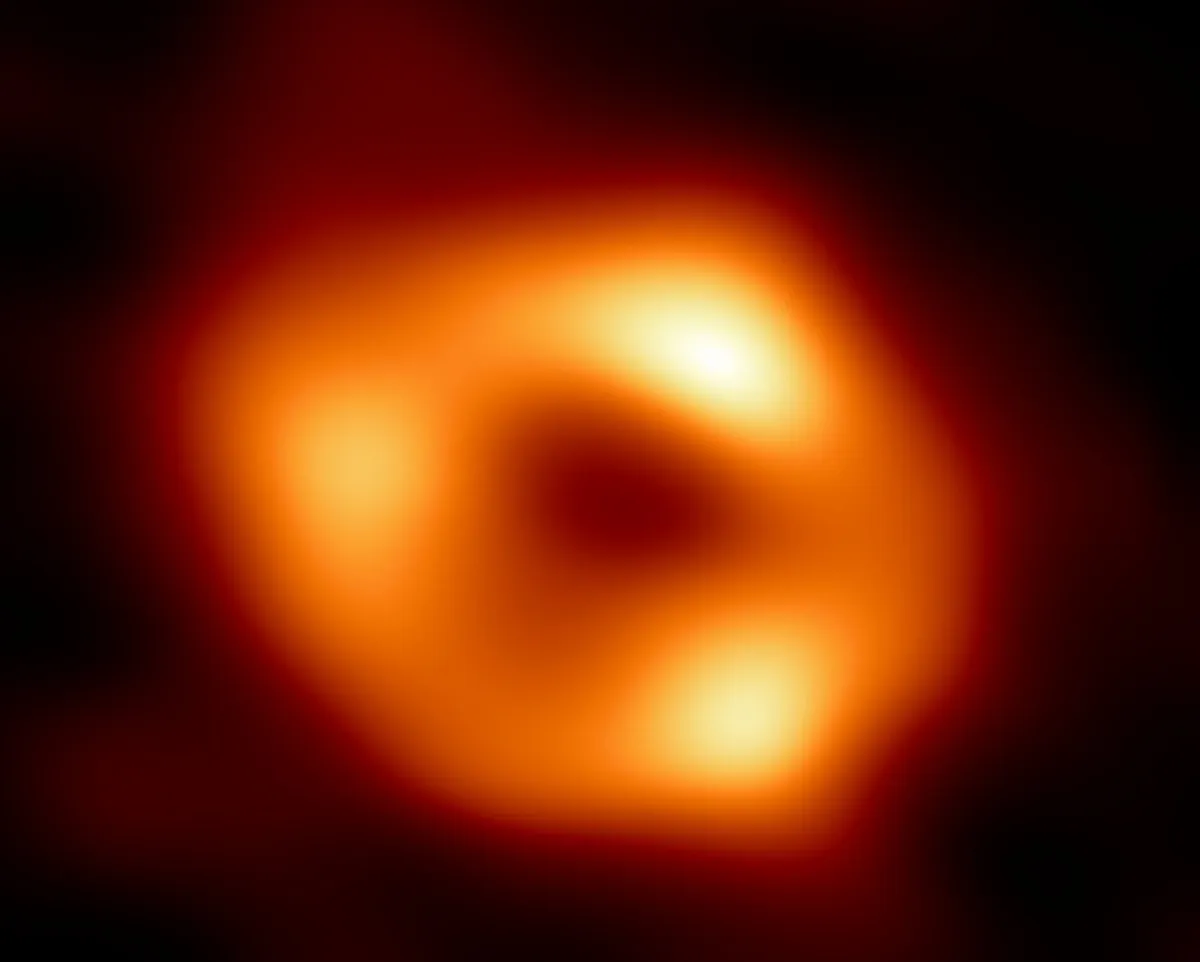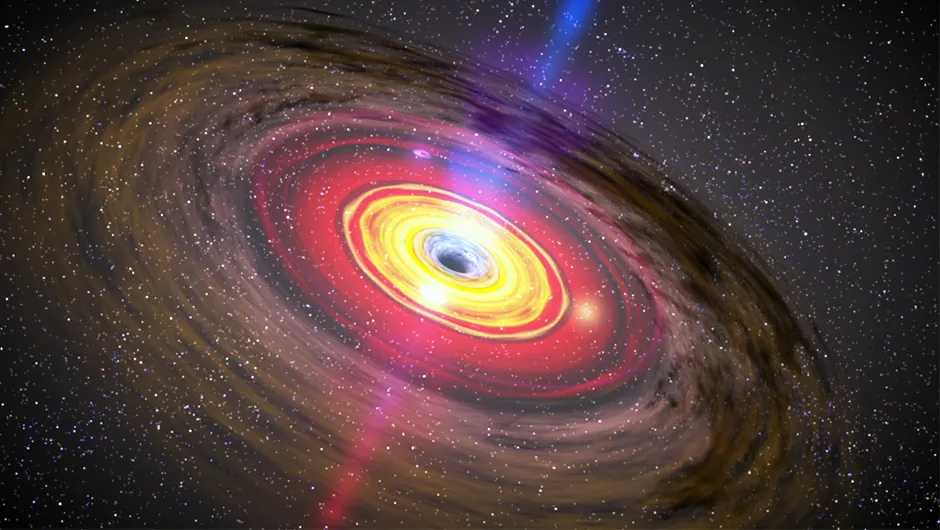The James Webb Space Telescope has given astronomers an unprecedented view of the supermassive black hole at the centre of our Galaxy, and revealed a constant stream of flares is coming from it.
Most major galaxies have a supermassive black hole at their centre, and our Milky Way galaxy is no exception.
More on black holes

Supermassive black holes are thought to play a key role in the formation and evolution of galaxies, and so learning more about our own could reveal the secrets of the Milky Way.
This James Webb Space Telescope study has given scientists the longest, most detailed glimpse yet of the supermassive black hole at our galactic core.

What Webb found at our central black hole
The Webb Telescope spotted a constant stream of flares coming from the accretion disk surrounding Sagittarius A*, the supermassive black hole at the centre of our galaxy.
This accretion disk is a swirling disk of gas and dust around the black hole, and the study found that it's firing out flares into space with no period of rest.
Some flares are flickers lasting just seconds, while other flares are "blindingly bright" and happen daily.
Webb's study could help reveal the secrets of black holes, what happens when matter falls into them, and the evolution of our galaxy.

"In our data, we saw constantly changing, bubbling brightness," says Farhad Yusef-Zadeh of Northwestern University in Illinois, who led the study.
"And then boom! A big burst of brightness suddenly popped up. Then, it calmed down again.
"We couldn’t find a pattern in this activity. It appears to be random. The activity profile of this black hole was new and exciting every time that we looked at it."
How Webb observed the black hole
Webb’s NIRCam (Near-Infrared Camera) observed Sagittarius A* for 48 hours in 8- to 10-hour periods over one year.
The team behind the study did expect to see flares coming from the black hole, but Webb saw more than expected.
Five to six big flares per day and several smaller flares in between were observed coming from the surrounding accretion disk.

What's causing the flares?
Yusef-Zadeh says two separate processes could be causing the longer flares and shorter bursts.
The fainter bursts, he says, could be coming from disturbances within the accretion disk, whereby turbulent fluctuations compress plasma and cause a temporary burst of radiation.
"It’s similar to how the Sun’s magnetic field gathers together, compresses and then erupts a solar flare," he says.
"Of course, the processes are more dramatic because the environment around a black hole is much more energetic and much more extreme. But the Sun’s surface also bubbles with activity."
But what about the bigger, brighter flares?
Yusef-Zadeh believes these could be caused by magnetic reconnection events, which is when two magnetic fields collide and release energy in the form of accelerated particles traveling near the speed of light.
"A magnetic reconnection event is like a spark of static electricity, which, in a sense, also is an 'electric reconnection'," Yusef-Zadeh says.
NIRCam's ability to see two separate wavelengths of light at the same time means the team were able to compare how the flares’ brightness changed in each wavelength.
They found events observed at shorter wavelengths changed brightness slightly before the longer-wavelength events.
"This is the first time we have seen a time delay in measurements at these wavelengths," Yusef-Zadeh says.
"We observed these wavelengths simultaneously with NIRCam and noticed the longer wavelength lags behind the shorter one by a very small amount — maybe a few seconds to 40 seconds."
One explanation for this difference is that the accelerated particles are losing energy as the flare is emitted.
And they lose energy quicker at shorter wavelengths than at longer wavelengths.
Yusef-Zadeh and his team now intend to observe Sagittarius A* for a longer period of time, perhaps over 24 uninterrupted hours, to get a better look.
"When you are looking at such weak flaring events, you have to compete with noise," says Yusef-Zadeh.
"If we can observe for 24 hours, then we can reduce the noise to see features that we were unable to see before. That would be amazing.
"We also can see if these flares repeat themselves or if they are truly random."
The study was published in the 18 February 2025 issue of The Astrophysical Journal Letters.
